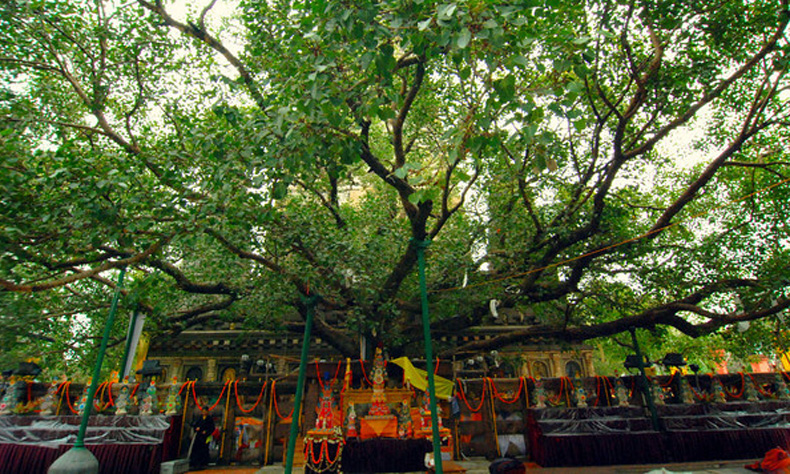It looks like you're using an Ad Blocker.
Please white-list or disable AboveTopSecret.com in your ad-blocking tool.
Thank you.
Some features of ATS will be disabled while you continue to use an ad-blocker.
share:
There has been a somewhat sketchy suggestion made that the overall site of Gobekli Tepe takes the form of a giant Bull Geoglyph and that the portion
thus far most fully excavated would have represented the Pleiades to the builders, which i touched upon
here
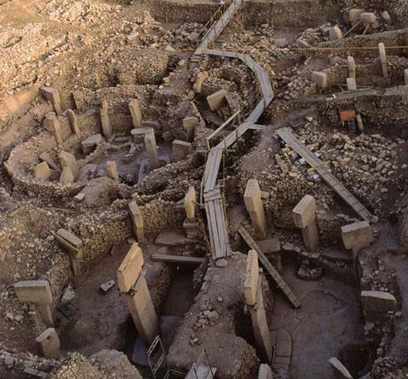
What i would like to do in this thread is look at further evidence for this in offshoot cultures from the core Neolithic region, primarily Harappan culture and Neolithic Malta to further consider this suggestion a strong symbolic tradition based around the Pleiades in formative Neolithic culture and why that should have developed.
The reason why i think the suggestion for Gobekli Tepe holds good is the basic inter-connected organic relationship of the various stone circles.
In a sense this is an extension of my suggestions from the Arriving from the Pleiades thread, in which it was discussed how a Celestial barque represented by the Bull Taurus brought a shining Goddess of procreation to the Earth along with her fourteen attendants and blessings of enlightenment and abundance would have resulted from such.
This would have been in the sense of seasonal festivities centred upon nature, but the question still remains as to the primary importance of the Pleiades in such.

A key consideration here is that the trefoil pattern of the Bodhi/fig tree seen upon the shoulders of the Bull could in and of itself represent the Pleiades, and that this organic representation of the star cluster is the reasoning behind the layout of the associated circles at Gobekli Tepe and elsewhere, so that is the case i shall be making.
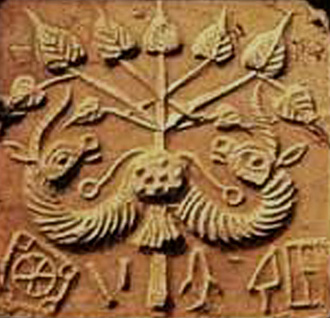
Looking at the Harrapan motif to the right then of the Bodhi tree as a cosmic axis one see's that helpfully they have naturally represented the Pleiades star cluster in the centre to establish the relationship between the two, there is also basic numeric symbolism of seven upper leafs and two lower, this being a generally observed tradition of seven sisters or attendants of a Goddess such as Inanna or Hathor, or the tradition of the seven sages and their seven gifts toward humanity.
The fish i have also suggested could well have been the sign for the Pleiades cluster in Harrapan culture, there it is seen in the descriptive signs of what is represented.
The constellation would have been seen as relating to the greater astral configuration associated with Taurus and the 'celestial gate' above it at the base of Gemini, were the Ecliptic plane and Galactic intersect.
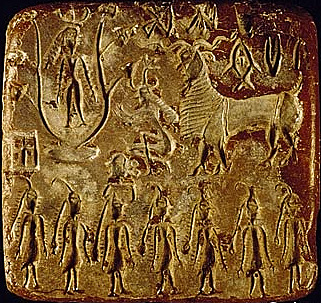
This greater context is seen to the right, involving the Taurus bull, the seven attendants representing the Pleiades, and the Goddess herself between the gate which is a double Bodhi tree, an early representation of Gemini then.
A horned male figure kneels and greets her, probably to be associated with the bull and in the sense of a consort, fertility aspects are common to the cult but at their formative basis also extend toward the birthing of humanity in conjunction with the essence of the Gods, and thus there are ancestral relations to the Divine Pleiadians which became an important aspect of folklore related to the cluster.
The Bodhi tree remained of course an important symbolic aspect of Indian culture, particularly with regards to the rise of Buddhism were enlightenment is seen to have been attained beneath it, but that was very much a continuation of a tradition rather than a new insight.
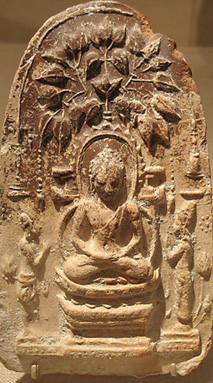
The tree itself will have the general association of serpentine basis in it's root system, but also the Bodhi tree puts down elaborate aerial roots back into the ground as it's branches widely extend outwards, it's branches as they spiral inwards gracefully often carry the sense of systems within systems, an inward gravitational arc were many singularities are aspects of an inter-related whole.
This idea can carry through as seen with the Pleiades as a grouping of stars then as seperate branches and leafs upon a greater tree, or it can relate to individuals, the notion then capable to the Universe as a whole or individuals within a particular society, if that is the essential message of the Pleiades then it is not a bad one.
Taking into account that the formative basis for this philosophy of organic inter-connected relationships dates back some 12,000 years to the time of Gobekli Tepe according to what i suggest here should raise a few questions...
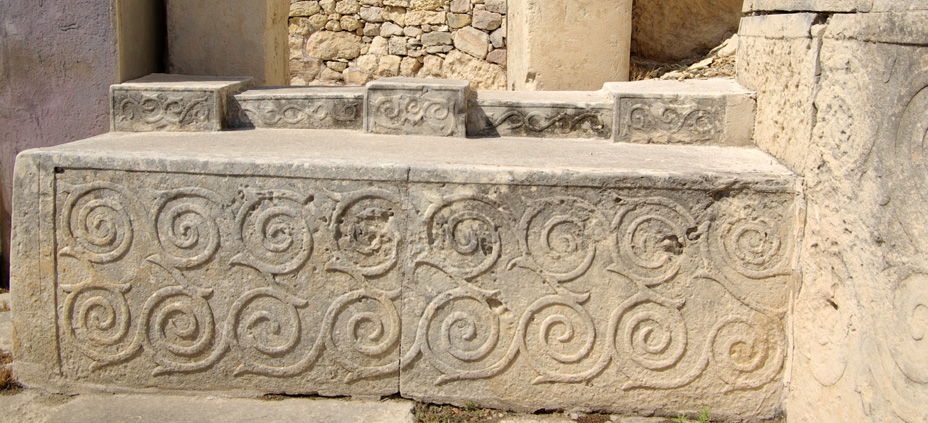
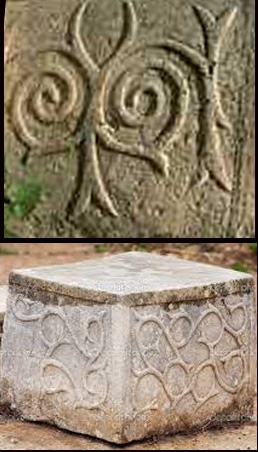
Moving on to Malta then again their most important cultural motif is the spiral as it related to the sacred fig tree, one even see's to the right this with regards to grafting, the extension and expansion principle. The spiral motif spread around Neolithic Europe but nowhere was it more finely realized that at Malta and from there can be properly understood.
It informed their architectural design of Temple site planning and the organic aspect of those and could be represented in a highly formal manner or organic and complex, many fine examples are seen at Tarxien, of course again this was the principle of how societies should relate to the individual and how also different societies should relate one to the other, an all purpose design for living.
At the heart of their religion was the oracle room of the Hypogeum, here on the ceiling organic tracery very much reminiscent of that seen on the Harrapan bull is located, this is the motif as applied to the realm of spirit, were again all is inter-connected and related to a singular whole.
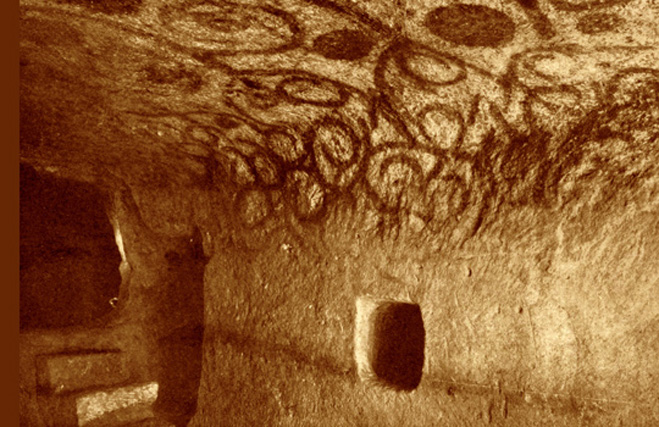
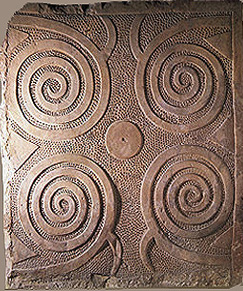
Hopefully then this presentation has helped give some insight into the greater vision of our distant ancestors, helps to establish the meaning behind their symbolism which in it's enigmatic nature points to an even greater mystery in how such wisdom was established, their consideration that it was of the Pleiades.
The Pleiades have long been known to be a physically related group of stars rather than any chance alignment. The Reverend John Michell calculated in 1767 that the probability of a chance alignment of so many bright stars was only 1 in 500,000, and so correctly surmised that the Pleiades and many other clusters of stars must be physically related. When studies were first made of the stars' proper motions, it was found that they are all moving in the same direction across the sky, at the same rate, further demonstrating that they were related

What i would like to do in this thread is look at further evidence for this in offshoot cultures from the core Neolithic region, primarily Harappan culture and Neolithic Malta to further consider this suggestion a strong symbolic tradition based around the Pleiades in formative Neolithic culture and why that should have developed.
The reason why i think the suggestion for Gobekli Tepe holds good is the basic inter-connected organic relationship of the various stone circles.
In a sense this is an extension of my suggestions from the Arriving from the Pleiades thread, in which it was discussed how a Celestial barque represented by the Bull Taurus brought a shining Goddess of procreation to the Earth along with her fourteen attendants and blessings of enlightenment and abundance would have resulted from such.
This would have been in the sense of seasonal festivities centred upon nature, but the question still remains as to the primary importance of the Pleiades in such.

A key consideration here is that the trefoil pattern of the Bodhi/fig tree seen upon the shoulders of the Bull could in and of itself represent the Pleiades, and that this organic representation of the star cluster is the reasoning behind the layout of the associated circles at Gobekli Tepe and elsewhere, so that is the case i shall be making.

Looking at the Harrapan motif to the right then of the Bodhi tree as a cosmic axis one see's that helpfully they have naturally represented the Pleiades star cluster in the centre to establish the relationship between the two, there is also basic numeric symbolism of seven upper leafs and two lower, this being a generally observed tradition of seven sisters or attendants of a Goddess such as Inanna or Hathor, or the tradition of the seven sages and their seven gifts toward humanity.
The fish i have also suggested could well have been the sign for the Pleiades cluster in Harrapan culture, there it is seen in the descriptive signs of what is represented.
The constellation would have been seen as relating to the greater astral configuration associated with Taurus and the 'celestial gate' above it at the base of Gemini, were the Ecliptic plane and Galactic intersect.

This greater context is seen to the right, involving the Taurus bull, the seven attendants representing the Pleiades, and the Goddess herself between the gate which is a double Bodhi tree, an early representation of Gemini then.
A horned male figure kneels and greets her, probably to be associated with the bull and in the sense of a consort, fertility aspects are common to the cult but at their formative basis also extend toward the birthing of humanity in conjunction with the essence of the Gods, and thus there are ancestral relations to the Divine Pleiadians which became an important aspect of folklore related to the cluster.
The Bodhi tree remained of course an important symbolic aspect of Indian culture, particularly with regards to the rise of Buddhism were enlightenment is seen to have been attained beneath it, but that was very much a continuation of a tradition rather than a new insight.

The tree itself will have the general association of serpentine basis in it's root system, but also the Bodhi tree puts down elaborate aerial roots back into the ground as it's branches widely extend outwards, it's branches as they spiral inwards gracefully often carry the sense of systems within systems, an inward gravitational arc were many singularities are aspects of an inter-related whole.
This idea can carry through as seen with the Pleiades as a grouping of stars then as seperate branches and leafs upon a greater tree, or it can relate to individuals, the notion then capable to the Universe as a whole or individuals within a particular society, if that is the essential message of the Pleiades then it is not a bad one.
Taking into account that the formative basis for this philosophy of organic inter-connected relationships dates back some 12,000 years to the time of Gobekli Tepe according to what i suggest here should raise a few questions...


Moving on to Malta then again their most important cultural motif is the spiral as it related to the sacred fig tree, one even see's to the right this with regards to grafting, the extension and expansion principle. The spiral motif spread around Neolithic Europe but nowhere was it more finely realized that at Malta and from there can be properly understood.
It informed their architectural design of Temple site planning and the organic aspect of those and could be represented in a highly formal manner or organic and complex, many fine examples are seen at Tarxien, of course again this was the principle of how societies should relate to the individual and how also different societies should relate one to the other, an all purpose design for living.
At the heart of their religion was the oracle room of the Hypogeum, here on the ceiling organic tracery very much reminiscent of that seen on the Harrapan bull is located, this is the motif as applied to the realm of spirit, were again all is inter-connected and related to a singular whole.


Hopefully then this presentation has helped give some insight into the greater vision of our distant ancestors, helps to establish the meaning behind their symbolism which in it's enigmatic nature points to an even greater mystery in how such wisdom was established, their consideration that it was of the Pleiades.
The Pleiades have long been known to be a physically related group of stars rather than any chance alignment. The Reverend John Michell calculated in 1767 that the probability of a chance alignment of so many bright stars was only 1 in 500,000, and so correctly surmised that the Pleiades and many other clusters of stars must be physically related. When studies were first made of the stars' proper motions, it was found that they are all moving in the same direction across the sky, at the same rate, further demonstrating that they were related
Wasn't that the climax to the Battlestar Galactica remake?
In all seriousness, I firmly believe there is an Era of Human history we don't know about.
But rather than look to the stars I look here, Man as we are now, has been on this planet for 200k some odd years, give or take.
Thats with the Current Homo Sapien level brain development, It is far more logical and practical to assume that things of this nature are a remnant of a Proto-culture.
Something that Perhaps vanished in the last Ice Age, and that the few survivors are what sprung up with the current known Myth and Allegory of old.
From the TOBA bottle neck in genetic history, to the Mitochondrial EVE groups, and yes the site in the op, could all be related to a Culture that we only hear whispers about.
How many Flood myths in Cultures?
How many stories of small group of "travelers" with knowledge, etc.
All could be terrestrial, and logically so would make the most sense.
ETA:
Ill add no one can track down Glass invention date, but as early as Egypt they had full manufacturing of it, and thats all that is needed for accurate measure of the stars.
In all seriousness, I firmly believe there is an Era of Human history we don't know about.
But rather than look to the stars I look here, Man as we are now, has been on this planet for 200k some odd years, give or take.
Thats with the Current Homo Sapien level brain development, It is far more logical and practical to assume that things of this nature are a remnant of a Proto-culture.
Something that Perhaps vanished in the last Ice Age, and that the few survivors are what sprung up with the current known Myth and Allegory of old.
From the TOBA bottle neck in genetic history, to the Mitochondrial EVE groups, and yes the site in the op, could all be related to a Culture that we only hear whispers about.
How many Flood myths in Cultures?
How many stories of small group of "travelers" with knowledge, etc.
All could be terrestrial, and logically so would make the most sense.
ETA:
Ill add no one can track down Glass invention date, but as early as Egypt they had full manufacturing of it, and thats all that is needed for accurate measure of the stars.
edit on 23-3-2014 by benrl because: (no reason given)
reply to post by benrl
But the symbolism always conveys the message of inter-connectivity between the terrestrial realm and the Celestial, even the Underworld, it is about all being as one, as perceived in the mind of an individual as on a single Bohdi leaf, the wisdom tradition in and of itself then negates your position
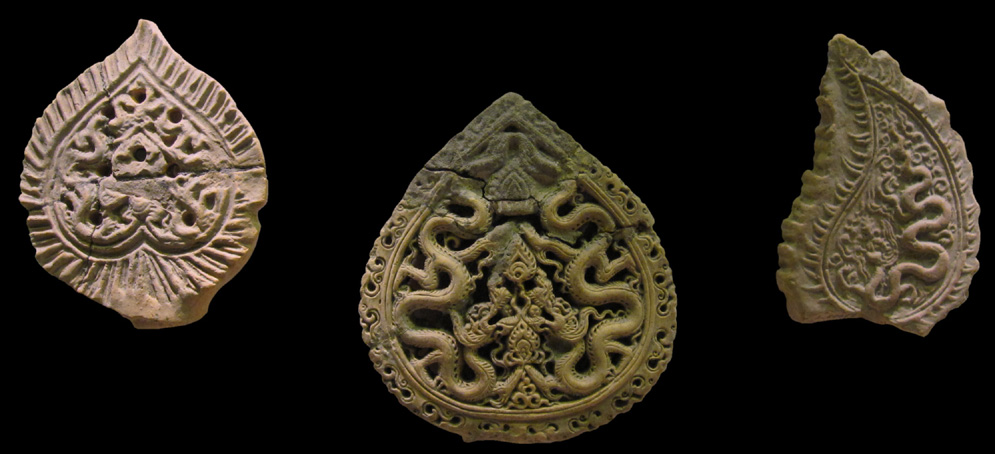
But the symbolism always conveys the message of inter-connectivity between the terrestrial realm and the Celestial, even the Underworld, it is about all being as one, as perceived in the mind of an individual as on a single Bohdi leaf, the wisdom tradition in and of itself then negates your position

Kantzveldt
reply to post by benrl
But the symbolism always conveys the message of inter-connectivity between the terrestrial realm and the Celestial, even the Underworld, it is about all being as one, as perceived in the mind of an individual as on a single Bohdi leaf, the wisdom tradition in and of itself then negates your position
Oh well than, all explained, aliens...
eta

edit on 23-3-2014 by benrl because: img
Kantzveldt
reply to post by benrl
But the symbolism always conveys the message of inter-connectivity between the terrestrial realm and the Celestial, even the Underworld, it is about all being as one, as perceived in the mind of an individual as on a single Bohdi leaf, the wisdom tradition in and of itself then negates your position
Beautiful post, I intend too spend much more time with your assessment. I would like to add my take...."oneness" from our duality perspective was meaningfully described on the Emerald Tablet: As above so below. I also have a theory regarding the stone circles, I believe in this case they served as supports for wooden or other material extensions, IE the Minoans use of stone and wood together in order to mitigate volcanic and earthquake/volcanic activity in the area.
erp...double
edit on 23-3-2014 by BlueJacket because: (no reason given)
reply to post by Kantzveldt
and in other Philosophy everything outside of self interest is worthless.
Philosophy is an intellectual circile J that can be made to say and "be" anything, and really has no place in archaeology or historical evidence.
Just like Religion it should be a foot note in the intellectual pursuit of evidence.
and in other Philosophy everything outside of self interest is worthless.
Philosophy is an intellectual circile J that can be made to say and "be" anything, and really has no place in archaeology or historical evidence.
Just like Religion it should be a foot note in the intellectual pursuit of evidence.
reply to post by benrl
Were all is as One then all is self interest, there is more to learn than you assumed in this tradition
Were all is as One then all is self interest, there is more to learn than you assumed in this tradition
I think it is either one of two things .
1 Is where there was an extremely intelligent civilization/s with global reach. That was hit hard with the last ice age and hit again when the ice age melted from massive land floods and title wave rushing down land masses when massive dams gave way to massive lakes of ice melt. miles high!!
2 Is there was an contact and influence from an extraterrestrial race in it's self would explain a lot and there does seem to be some evidence that supports this as well .
Or maybe even a 3 . There was an intelligent civilization from a long forgotten past that was almost obliterated by natural disasters and by chance there was a alien race just happening to be passing by and saw what happened and felt they should help us rebuild our world and civilizations with structures around the world with the flavor of the local architect in various regions .
1 Is where there was an extremely intelligent civilization/s with global reach. That was hit hard with the last ice age and hit again when the ice age melted from massive land floods and title wave rushing down land masses when massive dams gave way to massive lakes of ice melt. miles high!!
2 Is there was an contact and influence from an extraterrestrial race in it's self would explain a lot and there does seem to be some evidence that supports this as well .
Or maybe even a 3 . There was an intelligent civilization from a long forgotten past that was almost obliterated by natural disasters and by chance there was a alien race just happening to be passing by and saw what happened and felt they should help us rebuild our world and civilizations with structures around the world with the flavor of the local architect in various regions .
edit on 23/3/14 by freedomSlave because: (no reason given)
reply to post by Kantzveldt
No, not really.
If you want to start arguing Philosophy, we certainly can.
I started out an Atheist and searched for sometime, Educated in Theology and Philosophy.
But just as Religion, when dealing with FACT and historical record, the only place for it is in VIEWING from the mindset of, NOT constructing evidence based around.
You are falling for the same traps that get Theist, to anyone outside the philosophies view you are arguing un provable nonsense while trying to tie it to archaeology.
ETA:
The very argument that any stone circle equates to this philosophy to tie it to the Site in the op is the direct inference I mean.
No, not really.
If you want to start arguing Philosophy, we certainly can.
I started out an Atheist and searched for sometime, Educated in Theology and Philosophy.
But just as Religion, when dealing with FACT and historical record, the only place for it is in VIEWING from the mindset of, NOT constructing evidence based around.
You are falling for the same traps that get Theist, to anyone outside the philosophies view you are arguing un provable nonsense while trying to tie it to archaeology.
ETA:
The very argument that any stone circle equates to this philosophy to tie it to the Site in the op is the direct inference I mean.
edit on
23-3-2014 by benrl because: (no reason given)
reply to post by benrl
Well i've considered and examined the archaeological evidence and suggested an underlying Philosophy behind it all that carried through into the historical period in such manifestations as Buddhism, i'm not really here to argue Philosophy i'm here to state this case, if you want to question any particular aspect of this then be my guest, but i assure you i know this subject material well.
Well i've considered and examined the archaeological evidence and suggested an underlying Philosophy behind it all that carried through into the historical period in such manifestations as Buddhism, i'm not really here to argue Philosophy i'm here to state this case, if you want to question any particular aspect of this then be my guest, but i assure you i know this subject material well.
reply to post by benrl
I don't want to come off inflammatory, but please philosophy and science are married to one another. Social context...is another way to describe a philosophical paradigm. Many many peoples the world over tied their philosophy into their structures. I mean Olmecs, Mayans, Ancient Chinese, India. This post is in no way ignoring facts to support his theory...he is utilizing understanding of ancient philosophy to engender a broader appreciation of his theory, as yet to be proven.
I don't want to come off inflammatory, but please philosophy and science are married to one another. Social context...is another way to describe a philosophical paradigm. Many many peoples the world over tied their philosophy into their structures. I mean Olmecs, Mayans, Ancient Chinese, India. This post is in no way ignoring facts to support his theory...he is utilizing understanding of ancient philosophy to engender a broader appreciation of his theory, as yet to be proven.
How do you think gobeckli tepe got buried?
Ive heard it said it looks as if done deliberately......?
In theory I suppose that a star people may have stopped by, helped us out, then took off after burying all traces of their presence to be discovered at a later date?
No archaeologist me....but very interested in the origins beyond our accepted history....
Ive heard it said it looks as if done deliberately......?
In theory I suppose that a star people may have stopped by, helped us out, then took off after burying all traces of their presence to be discovered at a later date?
No archaeologist me....but very interested in the origins beyond our accepted history....
reply to post by freedomSlave
The Sumerians believed in contact from the Pleiades in the form of seven Apkallu/sages they also understood the seven Gallu Demons as being related to the Pleiades.
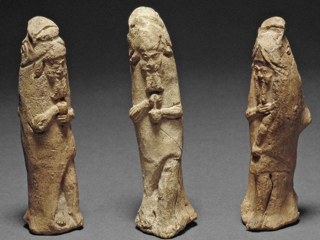
Such figurines were placed as Foundation deposits within buildings as they saw this contact whatever form it had taken in terms of such, the bringing of the gifts of civilization. A former advanced civilization there is no evidence for.
reply to post by stirling
It got buried in the same concrete used in it's construction see here. As to why nobody knows apart from guesswork, some consider sections were constructed and filled in as they went along, which seems a little pointless, but at present insufficient data for any conclusions, it's possible the entire site was terra formed into a bull geoglyph at some later stage.
reply to post by BlueJacket
That is of course the case, the art and architecture of the cultures reflects their belief system, sometimes of course people believe very little and it really shows...
The Sumerians believed in contact from the Pleiades in the form of seven Apkallu/sages they also understood the seven Gallu Demons as being related to the Pleiades.

Such figurines were placed as Foundation deposits within buildings as they saw this contact whatever form it had taken in terms of such, the bringing of the gifts of civilization. A former advanced civilization there is no evidence for.
reply to post by stirling
It got buried in the same concrete used in it's construction see here. As to why nobody knows apart from guesswork, some consider sections were constructed and filled in as they went along, which seems a little pointless, but at present insufficient data for any conclusions, it's possible the entire site was terra formed into a bull geoglyph at some later stage.
reply to post by BlueJacket
That is of course the case, the art and architecture of the cultures reflects their belief system, sometimes of course people believe very little and it really shows...
edit on Kpm33181vAmerica/ChicagoSunday2331 by Kantzveldt because: (no reason given)
reply to post by Kantzveldt
Very well done! I have always had this fascination with the Pleiades and Orion. Something about both of them stirs something in me whenever I see them in the sky, like I have some kind of cosmic connection to them. To me the Pleiades seems to resemble a giant brain and the symbolism that represents to me is beyond comprehension. Orion is not the subject of this thread, but it too has a symbolic meaning beyond comprehension. There are so many places on this planet that seem to correlate to both that permeate throughout many different cultures and transcend civilizations and continents.
Very well done! I have always had this fascination with the Pleiades and Orion. Something about both of them stirs something in me whenever I see them in the sky, like I have some kind of cosmic connection to them. To me the Pleiades seems to resemble a giant brain and the symbolism that represents to me is beyond comprehension. Orion is not the subject of this thread, but it too has a symbolic meaning beyond comprehension. There are so many places on this planet that seem to correlate to both that permeate throughout many different cultures and transcend civilizations and continents.
reply to post by Kantzveldt
Good Read Thank you!
I am puzzled though on the connection between the Maltese sites and Gobekli.
They have a similar 2-6 Apse design, which is clear. Yet with the connection to the spirals…… Tarxien is where they are most prominent but Tarxien does not show any signs of astrological study or monitoring compared to Mnajdra and Hagar Qim which vice versa hold, to my knowledge no spiral carvings.
The Hypogeum has the spiral Carvings most likely down to the fact its location to Tarxien is within a 10 minute walk and therefore where used by the same people especially where the Hypogeum was the main burial site for the people of Tarxien during Neolithic times. The purpose may be as simple as a trend of arts such as what we have today in different cultures. What they had for Art in Life may have well been wanted for in Death.
Tarxien had all the means to be an ‘industrial’ complex where rolling stones for construction where found and also methods of clay casting and stone rendering was also present, while Mnajdra and Hagar Qim have many associations with the Winter and Summer solstice and a few theories of connecting certain entrances aligning with star constellations on the horizon (Mnajdra and Hagar Qim are located on a cliff ridge overlooking the sea)
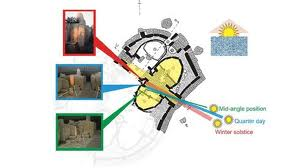
It seems odd that one era of pre history would only provide spirals as any evidence to astrology and yet further in history more sites such as Mnajdra and Hagar Qim are nearly fully focused on this.
It doesn’t help that the ancient peoples of the Maltese Isles had next to nothing in writing and the few clay tablets in cuneiform found seem to be non-related to the population and were from other wandering traders. While as Gobekli does have a large vault of information and they are still finding more…… Possibly Gobekli will be the key to connect the dots but the Maltese spirals…… seem to lead to no where in my opinion at least
Good Read Thank you!
I am puzzled though on the connection between the Maltese sites and Gobekli.
They have a similar 2-6 Apse design, which is clear. Yet with the connection to the spirals…… Tarxien is where they are most prominent but Tarxien does not show any signs of astrological study or monitoring compared to Mnajdra and Hagar Qim which vice versa hold, to my knowledge no spiral carvings.
The Hypogeum has the spiral Carvings most likely down to the fact its location to Tarxien is within a 10 minute walk and therefore where used by the same people especially where the Hypogeum was the main burial site for the people of Tarxien during Neolithic times. The purpose may be as simple as a trend of arts such as what we have today in different cultures. What they had for Art in Life may have well been wanted for in Death.
Tarxien had all the means to be an ‘industrial’ complex where rolling stones for construction where found and also methods of clay casting and stone rendering was also present, while Mnajdra and Hagar Qim have many associations with the Winter and Summer solstice and a few theories of connecting certain entrances aligning with star constellations on the horizon (Mnajdra and Hagar Qim are located on a cliff ridge overlooking the sea)

It seems odd that one era of pre history would only provide spirals as any evidence to astrology and yet further in history more sites such as Mnajdra and Hagar Qim are nearly fully focused on this.
It doesn’t help that the ancient peoples of the Maltese Isles had next to nothing in writing and the few clay tablets in cuneiform found seem to be non-related to the population and were from other wandering traders. While as Gobekli does have a large vault of information and they are still finding more…… Possibly Gobekli will be the key to connect the dots but the Maltese spirals…… seem to lead to no where in my opinion at least
reply to post by soulpowertothendegree
Hey Kanzveldt great thread , I just was talking about those horns/spirals, maybe there are some clues in here for your thread.
Ancient Symbols
Paper on Ibex-->Bull
Hey Kanzveldt great thread , I just was talking about those horns/spirals, maybe there are some clues in here for your thread.
Ancient Symbols
Paper on Ibex-->Bull
Of all the bestiary that adorn the objets d’art of the ancient Near East, none has had so long, nor so eventful, a life as the ibex. First appearing on Samarran ware about 5500 BC, the ibex was among the earliest of the animal images to be seen on Near Eastern pottery.
Samarran ware consistently shows this caprid with long, branch-like antlers (1).3 That these antlers represent the so-called Tree of Life or Sacred Tree is shown by a further example, this time from the Iranian Plateau, c4500 BC, in which the antler-trees dominate the entiremotif (2). In other words, the ibex—in both the North Mesopotamian and the Iranian plateaux—arrives full-blown onto the stage carrying an already well-developed symbol of fertility.
The rest of the paper outlines his thesis that the Ibex, the ancient symbol of life and fertility, also of the moon because of the curved horns, was superseded by the Bull, brought on by the proto-Elamite's. The Lunar calendar was replaced by a lunar-solar calendar, and the Ibex became capricorn, aquarius and pegasus in the new theology.
reply to post by Maltese5Rhino
Those are interesting considerations, it can be seen at Tarxien that the spirals relate to tree iconography including in the sense of grafting, there is a concern with formal arrangement as well as the organic complex, best seen on the ceiling of the oracle room in the Hypogeum and indeed the overall site development.
In terms of Indus valley representations of a Bodhi/Fig tree as a cosmic axis it could be reduced to such simple form as this;
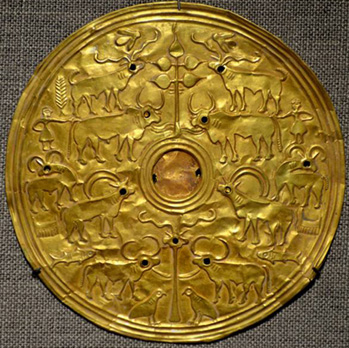
In many ways i think that's also what is being seen with the general design principle for Maltese Temples, the concern with orientation toward key points on the horizon whether solstice or equinox is an extended aspect of what i have suggested here, as the Pleiades/Taurus bull are always as a lead in to that intersection point of the Ecliptic and Galactic planes between Taurus and Gemini, thus the motif of the cosmic axis.
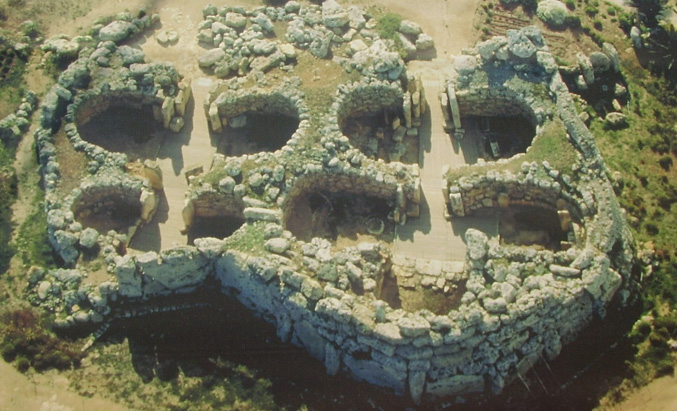
Hopefully this will all prove fruitfull toward a better understanding
reply to post by soulpowertothendegree
It's an interesting observation, the comparison to the brain, they certainly seem to have symbolized the cluster as the centre of organic inter-relationship, progression and development with regards to intelligence, this being in my opinion the essential message of the Pleiades symbolism.
reply to post by zardust
Did you catch this thread with regards to your interest in ibex and sacred trees? Sometimes an arrangement can be seen in Sumerian art with regards to a goat-winged Panther-deer triple correspondence to a celestial axis, which may relate to Capricorn-Pegasus-Andromeda, but it's difficult to say.
Those are interesting considerations, it can be seen at Tarxien that the spirals relate to tree iconography including in the sense of grafting, there is a concern with formal arrangement as well as the organic complex, best seen on the ceiling of the oracle room in the Hypogeum and indeed the overall site development.
In terms of Indus valley representations of a Bodhi/Fig tree as a cosmic axis it could be reduced to such simple form as this;

In many ways i think that's also what is being seen with the general design principle for Maltese Temples, the concern with orientation toward key points on the horizon whether solstice or equinox is an extended aspect of what i have suggested here, as the Pleiades/Taurus bull are always as a lead in to that intersection point of the Ecliptic and Galactic planes between Taurus and Gemini, thus the motif of the cosmic axis.

Hopefully this will all prove fruitfull toward a better understanding
reply to post by soulpowertothendegree
It's an interesting observation, the comparison to the brain, they certainly seem to have symbolized the cluster as the centre of organic inter-relationship, progression and development with regards to intelligence, this being in my opinion the essential message of the Pleiades symbolism.
reply to post by zardust
Did you catch this thread with regards to your interest in ibex and sacred trees? Sometimes an arrangement can be seen in Sumerian art with regards to a goat-winged Panther-deer triple correspondence to a celestial axis, which may relate to Capricorn-Pegasus-Andromeda, but it's difficult to say.
edit on Kam33182vAmerica/ChicagoMonday2431 by Kantzveldt because: (no reason
given)
new topics
-
Assetto Corsa EVO - a New Chapter in Simracing starts January 16th
Video Games: 1 hours ago -
The Phenomenon documentary by James Fox
Aliens and UFOs: 5 hours ago -
New UK Petition - Close the borders! Suspend ALL immigration for 5 years!
Regional Politics: 6 hours ago -
The Looking Glass - Episode 3: The Path of Least Resistance
Short Stories: 8 hours ago -
Credit card debt
Relationships: 10 hours ago -
President-elect Trump asks the Supreme Court to Let Tik-Tok Continue Operating in the U.S..
Mainstream News: 10 hours ago
top topics
-
Treasury Secretary Janet Yellen Says The USA Will Be in Debt Default in Jan 2025 - Unless...
Mainstream News: 14 hours ago, 8 flags -
Credit card debt
Relationships: 10 hours ago, 6 flags -
The Phenomenon documentary by James Fox
Aliens and UFOs: 5 hours ago, 6 flags -
Danish Prime Minister said to keep 3 days worth of canned goods on hand
World War Three: 15 hours ago, 5 flags -
Trash To Treasure: Dumpster Diving With Mike The Scavenger
General Chit Chat: 15 hours ago, 4 flags -
President-elect Trump asks the Supreme Court to Let Tik-Tok Continue Operating in the U.S..
Mainstream News: 10 hours ago, 3 flags -
The Looking Glass - Episode 3: The Path of Least Resistance
Short Stories: 8 hours ago, 2 flags -
New UK Petition - Close the borders! Suspend ALL immigration for 5 years!
Regional Politics: 6 hours ago, 1 flags -
Assetto Corsa EVO - a New Chapter in Simracing starts January 16th
Video Games: 1 hours ago, 1 flags
active topics
-
Post A Funny (T&C Friendly) Pic Part IV: The LOL awakens!
General Chit Chat • 7964 • : baddmove -
‘Something horrible’: Somerset pit reveals bronze age cannibalism
Ancient & Lost Civilizations • 32 • : McGinty -
Trump's idea to make Canada the 51st US state: 'Potential is massive'
Mainstream News • 77 • : Oldcarpy2 -
Plane Crash Today --Azerbaijanian E190 passenger jet
Mainstream News • 57 • : andy06shake -
President-elect Trump asks the Supreme Court to Let Tik-Tok Continue Operating in the U.S..
Mainstream News • 17 • : WeMustCare -
The Acronym Game .. Pt.4
General Chit Chat • 1032 • : JJproductions -
1 Billion dollars
General Entertainment • 14 • : Blueracer -
The hunter has become the hunted
Politicians & People • 14 • : xuenchen -
New UK Petition - Close the borders! Suspend ALL immigration for 5 years!
Regional Politics • 6 • : Cvastar -
Danish Prime Minister said to keep 3 days worth of canned goods on hand
World War Three • 9 • : Flyingclaydisk

